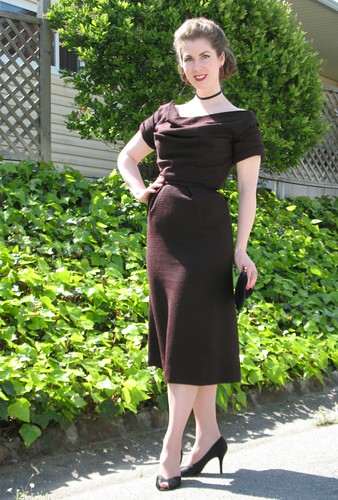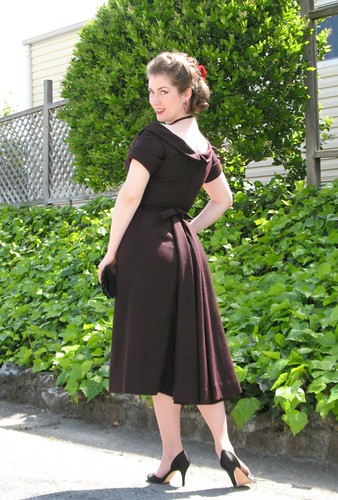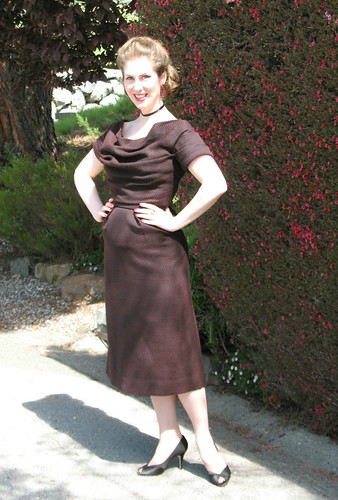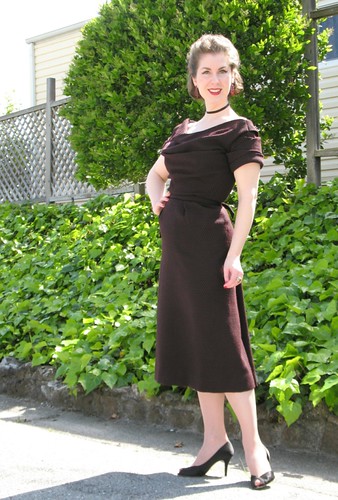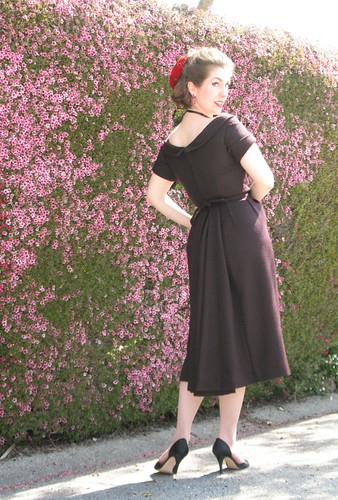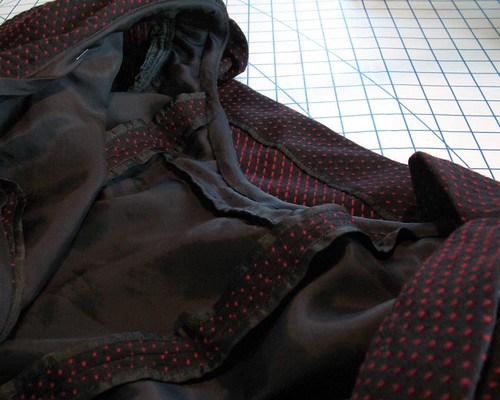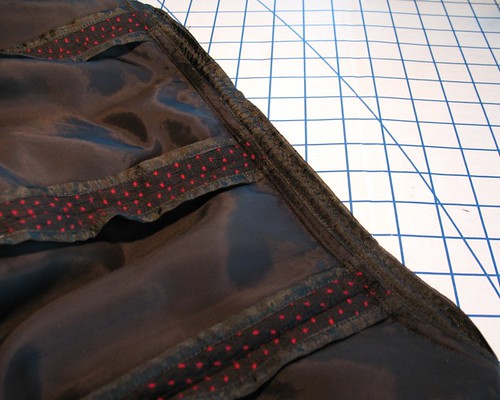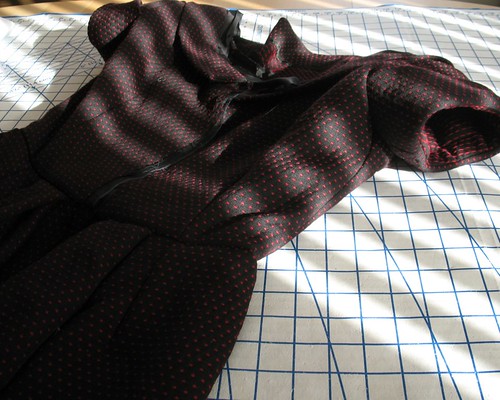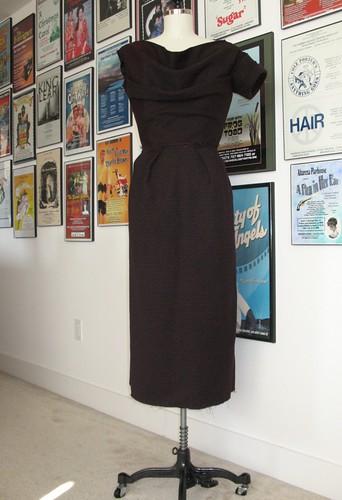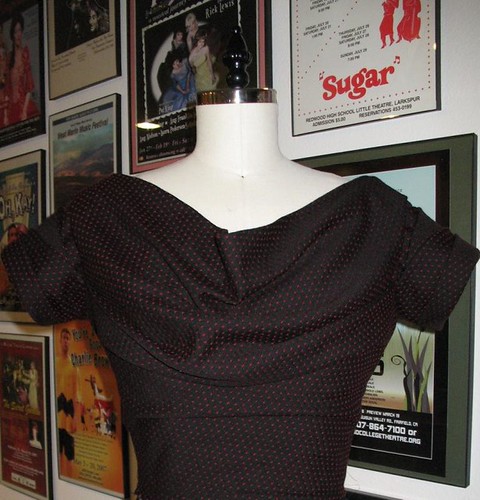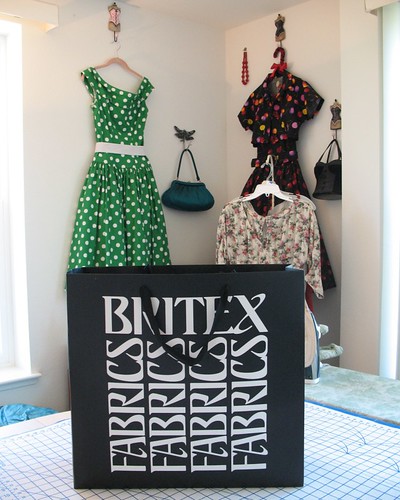Now I have my very own copy of
Spadea 1251 – and so can you! How awesome it that?! A glorious and rather complicated design has
been made available for more than one lucky soul who grabs the original for crazy sums of
cash on ebay.
Sizing is a little bit different for Spadea designs than
other vintage patterns – it assumes more extreme measurements than your standard
patterns from the 1950s. When I was
working with my first Ceil Chapman pattern, I came across
this site which has some
great information about the brand.
This pattern is copied from a vintage size 12/35” bust, so
it would have been the master pattern from which the other sizes were graded. The measurements are as follows: 35” bust, 25” waist, 36” hips. There seems to be a misconception that this
was standard for vintage patterns in the 40s and 50s. And looking at images from the period, I can
understand why!
This got me thinking about sizing charts in general, so I
dug out a few of my 1950s patterns.
The following sizing charts are from patterns in my
possession that are from the 1950s, either by copyright, or by my best guess
after looking at the style lines and envelope illustrations. Here is what is listed as a Size 12.
|
McCall
|
Simplicity
|
Vogue
|
Hollywood
|
Advance
|
Butterick
|
Mail Order
|
|
Bust 30
|
Bust 30
|
Bust 30
|
Bust 30
|
Bust 30
|
Bust 30
|
Bust 30
|
|
Waist 25
|
Waist 25
|
Waist 25
|
Waist 25
|
Waist 25
|
Waist 25
|
(no measurement given)
|
|
Hip 33
|
Hip 33
|
Hip 33
|
Hip 33
|
Hip 33
|
Hip 33
|
Hip 33
|
They are all the same!
But more interesting than that, these are not exactly the va-va-voom measurements that one might expect. Instead, they seem more appropriate for
contemporary clothing and figures with less of an emphasis on a small waistline.
The only exception to this standard is Spadea.
Spadea, it turns out, used a ready-to-wear size chart for
their patterns - which is more in line with the girdled and curvy figure ideal of the 1950s.
For more of a comparison, I went to find
what Gap Corp. thinks are appropriate measurements for a contemporary body (one which does not wear a girdle on a daily
basis). As expected, the size numbers are
utterly ridiculous. Our vintage size 12
with a 25” waist has now become a size 0/XS
(Bust32” - Waist25” - Hips35”). This is not as extreme as the ready-to-wear size chart of the 1950s, but still caters to more curves than the 1950s pattern sizing, which I find strange. Clothing that is produced today does not take these proportions into account, so what is the point of their size guides?
Ready-to-wear clothing in the year 2014 does not seem to
follow its own prescribed measurements, just as contemporary patterns from the Big 4 tend to offer more ease
than is necessary for their size chart. The
McCall Company’s contemporary size 10 is 32.5” - 25” - 34.5”.
That is more extreme than the standard pattern sizing chart used in the
50s – a decade that epitomized the wasp waist and celebrated the hourglass
figure. Go figure!
When did sizing get so darn complicated? And why is it that people are so hung up on
the number found on a tag in the back of their pants – it is meaningless
without some kind of context. The rumors
that Marilyn Monroe was a size 14 are, in fact, true – those numbers do not, however,
have anything to do with contemporary American sizing, or take into account
that she had a smaller than average waistline.
So where did these arbitrary numbers come from? Who decided that double digits mean a person is "fat"? And what the heck does "00" mean? Do we now long to occupy so little space that we disappear? And in forty years will "00000" be the average size of a supermodel? How many X's can you put in front of a size small before it becomes ridiculous?
Considering the variation that exists with the basic human body (a torso with four limbs attached including various squishy bits and fat deposits in different locations), it is a miracle that anyone looks halfway decent in clothing made to reflect an "average" build. It certainly makes me grateful for the ability to make my own clothes!!
Yikes . . . that was not where I expected this post to go . . .
I am not sure what any of this has to do with a glorious Ceil Chapman design, but now that I have said it, I feel so much better and can get back to my happy sewing space!

